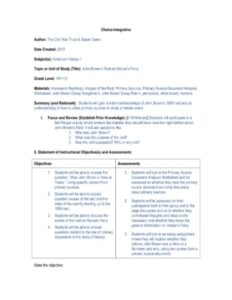
Our writing and editorial staff are a team of experts holding advanced financial designations and have written for most major financial media publications. Our work has been directly cited by organizations including Entrepreneur, Business Insider, Investopedia, Forbes, CNBC, and many others. This team of experts helps Finance Strategists maintain the highest level of accuracy and professionalism possible. Accountants must maintain the confidentiality of a company’s financial information and only disclose it to authorized parties. They should not use confidential information for personal gain or share it with unauthorized individuals.
Income Statement
All such information is provided solely for convenience purposes only and all users thereof should be guided accordingly. Accountants involved in financial statement preparation must act with integrity and objectivity, ensuring that they do not compromise their professional judgment due to personal interests or external pressures. The FASB is a private organization responsible for establishing and maintaining accounting standards in the United States. It develops GAAP and ensures that these standards are regularly updated tax brackets for 2020 2021 and 2022 caldculate tax rates to reflect evolving business practices and economic conditions. The following video summarizes the four financial statements required by GAAP.
You can use the information from your income statement and statement of retained earnings to create your balance sheet. As you create your balance sheet, include any current and long-term assets, current and noncurrent liabilities, and the difference between your assets and liabilities, or equity. After you generate your income statement and statement of retained earnings, it’s time to create your business balance sheet.
Second: Statement of Retained Earnings
The balance sheet reflects a company’s solvency and financial position. The statement of cash flows shows the cash inflows and outflows for a company over a period of time. The balance sheet, lists the company’s assets, liabilities, and equity (including dollar amounts) as of a specific moment in time. That specific moment is the close of business on the date of the balance sheet. Notice how the heading of the balance sheet differs from the headings on the income statement and statement of retained earnings. A balance sheet is like a photograph; it captures the financial position of a company at a particular point in time.
This section includes activities like raising new capital, paying off debt, and paying dividends. Cash flow from operating activities is the sum of cash inflow and outflow from activities like collection from debtors, payment to creditors, and taxes paid. The equity figure calculated when preparing the statement of changes in equity goes in this section. For example, if the company revalues an asset and it’s worth less, it’s the company’s loss. Retained earnings are the portion of net income the company doesn’t distribute as dividends.
- After the needed adjusting entries are completed, all the accounts are included in the adjusted trial balance.
- The articles and research support materials available on this site are educational and are not intended to be investment or tax advice.
- Use the information from your income statement and retained earnings statement to help create your balance sheet.
- Next, in the order of financial statements, is the statement of retained earnings.
- If you’re using the indirect method of preparing the cash flow statement, non-cash items like depreciation and amortization will also appear here.
Step 3: Prepare the Statement of Changes in Equity

Accrue an expense for any wages earned but not yet paid as of the end of the reporting period. Compare the receiving log to accounts payable to ensure that all supplier invoices have been received. Shareholders’ equity is money that belongs to the company’s owners (equity shareholders) and preference shareholders. Calculate the closing balance in stockholders’ equity and input this figure into the balance sheet. Each one of these documents gives stakeholders such as investors, creditors, employees — even competitors — valuable insights about where a business stands financially.
All of our content is based on objective analysis, and the opinions are our own. Retained earnings refers to the net profit of a company after it makes its dividend and other shareholder payments—earnings which are, therefore, “retained” by the company. Someone on our team will connect you with a financial professional in our network holding the correct designation and expertise. Our mission is to empower readers with the most factual and reliable financial information possible to help them make informed decisions for their individual needs.
If expenditures were greater than the revenues, the business experienced a net loss for the period. The trial balance is the balance of all the accounts at the end of the accounting period. For example, if the business’s accounting cycle for May runs from May 1 through May 31, the balances at the end of business on the 31st become the entries for the trial balance.
Horizontal analysis, on the other hand, involves comparing financial statement items across multiple periods to identify changes and trends in a company’s financial performance. The statement of retained earnings is the second financial statement you must prepare in the accounting cycle. Net profit or loss must be calculated before the statement of retained tips to using credit cards wisely earnings can be prepared. Examples of accounts that often require an adjustment include wages payable, accumulated depreciation and prepaid office supplies.
This statement will show you how cash has changed in your revenue, expense, asset, equity, and liability accounts during this accounting period. The statement of cash flows shows the cash inflows and cash outflows from operating, investing, and financing activities. Operating activities generally include the cash effects of transactions and other events that enter into the determination of net income. Management is interested in the cash inflows to the company and the cash 7 steps to a budget made easy outflows from the company because these determine the company’s cash it has available to pay its bills when due. We will examine the statement of cash flows in more detail later but for now understand it is a required financial statement and is prepared last. The statement of cash flows uses information from all previous financial statements.

